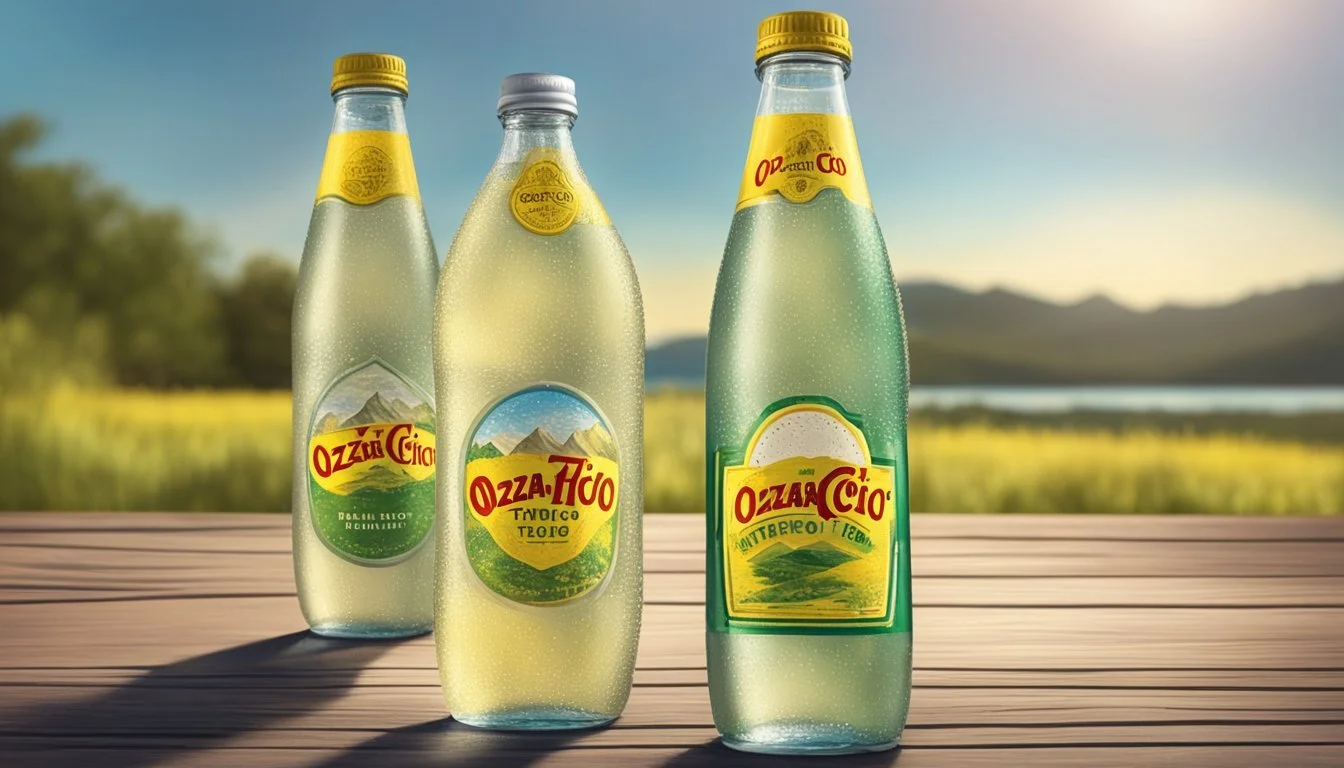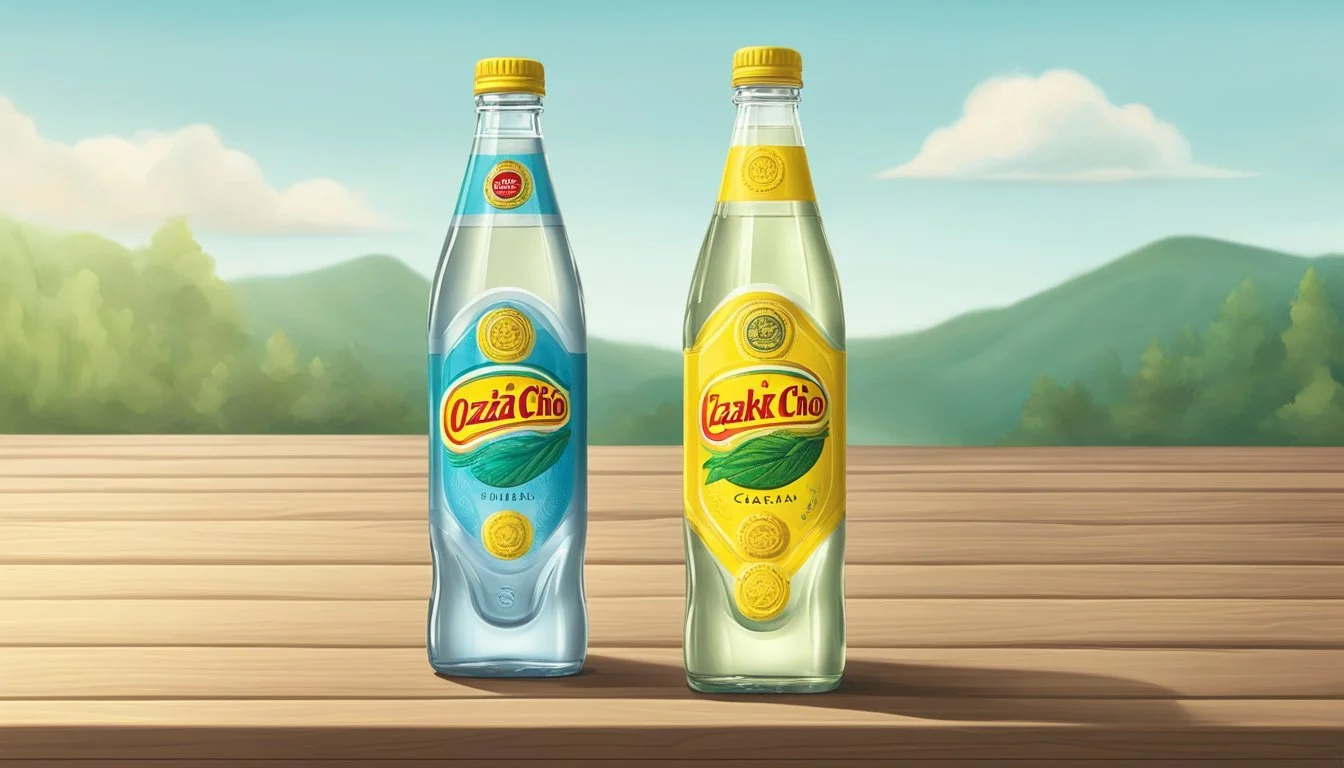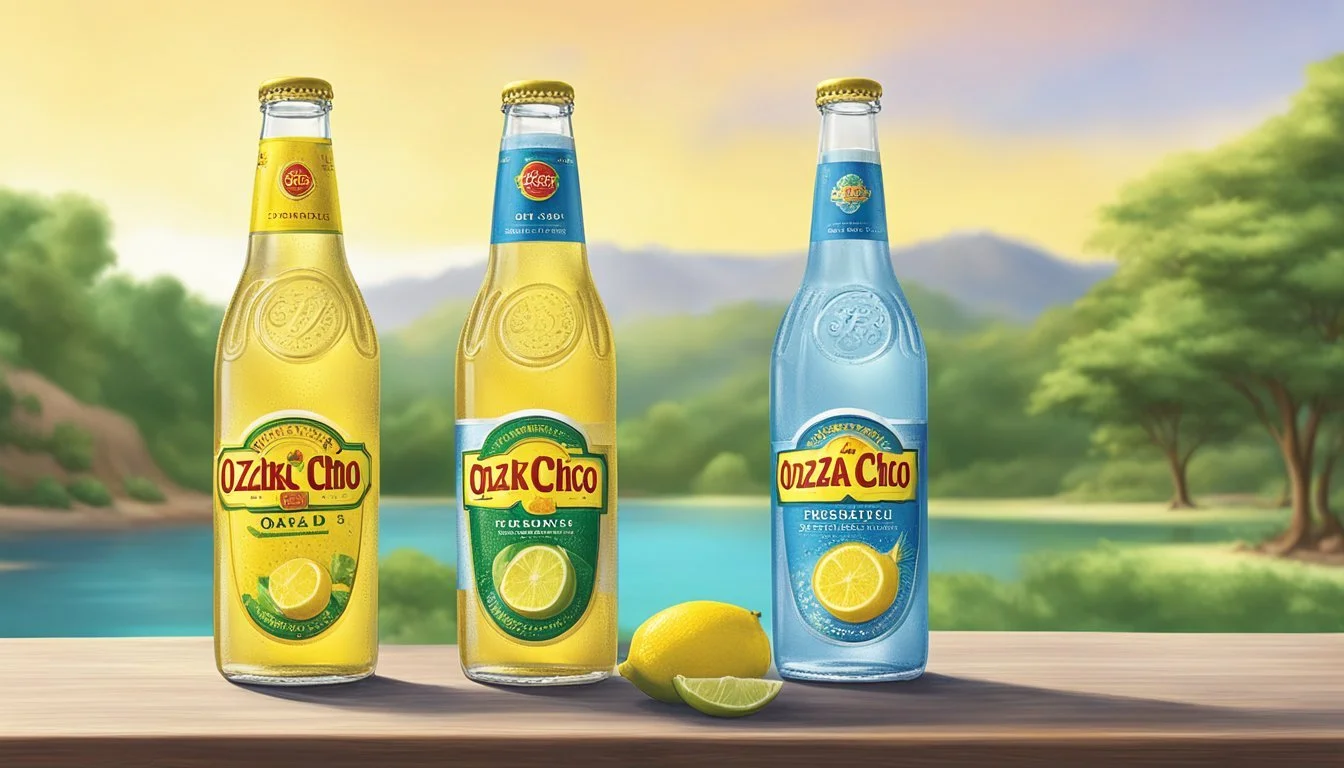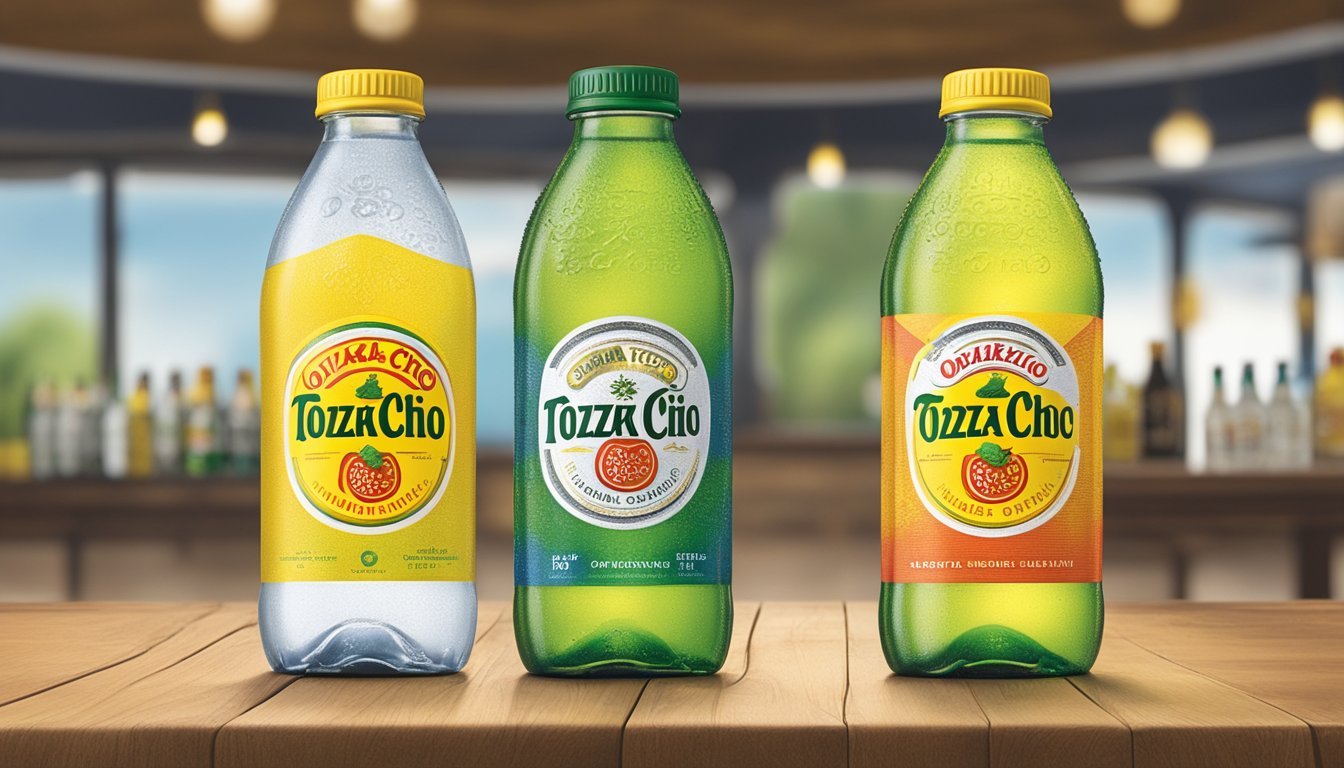Ozarka vs. Topo Chico
Comparing Quality and Taste in Bottled Waters
In the world of bottled water, the options can be overwhelming, yet certain brands manage to stand out through their unique sources and distinct flavor profiles. Ozarka and Topo Chico are two such brands that have carved out their own loyal followings. Ozarka, sourced from springs in Texas, presents itself as a natural choice for those seeking a taste of the region's native waters. Marketed as pure and refreshing, this brand emphasizes its connection to healthful, natural hydration.
Topo Chico, on the other hand, has its origins in Mexico, specifically from the Cerro del Topo Chico spring. Known for its distinctive mineral composition and the resulting taste, Topo Chico has garnered a reputation that stretches beyond its original borders. Fans of sparkling water often cite its crispness and effervescence as standout qualities, making it not just a source of hydration but also a mixer of choice for cocktails.
Choosing between Ozarka and Topo Chico may come down to individual preferences for still or sparkling water and the taste nuances influenced by the different sources and mineral contents of each brand. Thus, the debate over which bottled water is better isn't just about quenching thirst—it's a consideration of taste, health, and the specific qualities that make each brand unique.
Understanding Bottled Water
In considering Ozarka and Topo Chico, understanding the nuances of bottled water, from types to safety standards, is crucial for an informed choice.
Types of Bottled Water
Bottled waters are categorized based on their source and content. There are primarily two types: mineral water and spring water. Mineral water originates from a mineral spring and contains various minerals like salts and sulfur compounds. Topo Chico is an example, as it is sourced from a spring in Monterrey, Mexico. Spring water is collected from an underground formation from which water flows naturally to the earth's surface.
Source and Filtration Methods
The water source and the purification process are key factors in the quality of bottled water. While spring water may undergo minimal treatment, other bottled waters might be processed with filtration techniques like reverse osmosis to remove contaminants. Ozarka, for instance, sources its water from multiple Texan springs and utilizes a rigorous filtration and purification process to ensure safety.
Regulation and Safety Standards
The EPA regulates tap water, while the Food and Drug Administration oversees bottled water. Bottled water companies must comply with federal limits on contaminants, which include total PFAS (per- and polyfluoroalkyl substances), a group of man-made PFAS chemicals associated with adverse health effects. Companies ensure their bottled water adheres to strict safety standards to provide clean drinking water.
Health and Composition
Choosing between Ozarka and Topo Chico bottled water involves understanding their health benefits and composition, particularly in terms of minerals, electrolytes, and pH levels. These factors are crucial to how each brand contributes to hydration and potential health impacts.
Minerals and Electrolytes
Mineral content is a key differentiator between bottled waters. Ozarka, sourced from natural springs in Texas, is notable for containing a blend of minerals and electrolytes that are essential for hydration and bodily functions. It customarily has calcium for bone health, magnesium for regulating muscle and nerve function, and other trace elements that benefit overall well-being.
In contrast, Topo Chico, a sparkling mineral water, is known for its distinct mineral composition that includes a high concentration of carbonates and electrolytes. This not only gives Topo Chico its signature taste but also contributes to replenishing electrolytes lost through sweat and exertion.
pH Levels and Alkalinity
The pH level of bottled water can affect its taste and potential health claims. Alkaline water typically has a pH above 7, which some believe can help neutralize acid in the bloodstream. Ozarka's pH varies slightly depending on the source but generally leans towards slightly alkaline levels, which can contribute to the water's smooth taste and compatibility with a healthy diet.
Topo Chico's carbonation process results in a beverage that is more acidic due to the presence of carbonic acid. This acidity level is typical for sparkling waters, which can come with a refreshing taste but can also lead to discussions about the impact of acidity on dental health. It is important to note that while there are discussions about the health benefits of alkaline water, scientific evidence to conclusively support these claims is limited.
Comparing Topo Chico and Ozarka
In the landscape of bottled waters, Topo Chico and Ozarka represent two distinct offerings with unique characteristics. While Topo Chico is a carbonated mineral water heralded for its crisp taste, Ozarka is a non-carbonated spring water known for its natural sourcing from Texas springs.
Taste and Flavor Profiles
Topo Chico is often described as having a bold flavor, with a slight mineral taste due to its natural carbonation and high mineral content, which includes elements like sodium and potassium. Its sharp effervescence has made it widely popular in Texas and beyond, even becoming a key component in cocktails like ranch water.
Ozarka, meanwhile, is a flat spring water with a more neutral taste profile. It’s tapped directly from Texas springs and it lacks the mineral complexity of Topo Chico, offering a clean and refreshing taste that many prefer for straightforward hydration without the influence of carbonation or strong mineral flavors.
Carbonation and Mouthfeel
Topo Chico
Carbonation: Naturally carbonated; gives a distinct, strong fizz.
Mouthfeel: The effervescence creates a sharp, somewhat biting sensation, often described as a "slicing bubble" experience.
Ozarka
Carbonation: Non-carbonated; smooth, without effervescence.
Mouthfeel: Silky and soft, a gentle texture that is easy on the palate.
Topo Chico’s unique carbonation, which sets it apart from other sparkling waters, provides a robust mouthfeel, while Ozarka offers a placid smoothness that is typical of still spring waters.
Packaging and Sustainability
Topo Chico, now owned by Coca-Cola, is typically packaged in glass bottles, which are recyclable and can be more environmentally friendly than plastic if managed correctly. Ozarka, a Nestlé brand, offers its spring water in plastic bottles, but is moving towards a more sustainable approach by introducing bottles made with 100% recycled plastic and embracing carbon neutral commitments.
Topo Chico:
Material: Primarily glass bottles; more sustainable, but heavier and less convenient.
Ozarka:
Material: Plastic bottles, with a shift towards recycled materials.
Sustainability Efforts: Advancing towards carbon neutral production.
Both brands are taking steps towards sustainability, although Topo Chico's glass bottling positions it as a potentially more eco-friendly choice, while Ozarka is focusing on reducing its carbon footprint and improving the recyclability of its packaging.
Consumer Insights and Preferences
When consumers choose between Ozarka and Topo Chico, their preferences are often influenced by both brands' market positions and how they resonate with current trends and concerns about beverage safety and corporate practices.
Market Trends and Popularity
Ozarka, a brand with deep Texas roots, often appeals to regional loyalty and is known for its natural spring water sourced from multiple locations in the state. The brand's market strength is reflected in its extensive distribution, often found on Amazon and other large retail platforms, which suggests a broad consumer base. On the other hand, Topo Chico has developed a cult following for its sparkling mineral water, which boasts a unique taste that fans swear by.
Recent consumer reports have highlighted the issue of PFAS (perfluoroalkyl and polyfluoroalkyl substances) in various bottled waters, including Topo Chico. After an investigative journalist brought public attention to this issue, Topo Chico's parent company took steps to significantly reduce these levels, likely in response to evolving consumer demands for water quality that adheres to the strict standards set by bodies like the Food and Drug Administration.
This consumer pressure has not just reshaped product contents but has also led to increased transparency. Indeed, the shadow of class-action lawsuits often prompts companies to maintain corporate malfeasance at bay. Class-action lawsuits in the beverage industry have previously brought about changes and have forced companies to reconsider their product formulations and marketing strategies.
The preference for Ozarka versus Topo Chico may also hinge upon individual concerns about environmental impact and health implications, both of which are pivotal in contemporary consumer decision-making processes.
Environmental and Ethical Considerations
When evaluating Ozarka and Topo Chico, it's crucial to consider how each brand manages its water sources and adheres to corporate ethical practices. These factors are key indicators of their commitment to sustainability and social responsibility.
Water Source Management
Topo Chico and Ozarka source their water from natural springs. Ozarka sources its water from multiple springs in Texas and has a commitment to sustainable water management practices. They ensure that the withdrawal of water does not harm the ecosystems surrounding their sources. Topo Chico, sourced from a spring near Monterrey, Mexico, is under the management of Coca-Cola, which has faced scrutiny for water usage in the past but claims to follow sustainable water stewardship programs.
Other brands like Fiji Water and Mountain Valley emphasize the natural purity of their sources, but it's the management of these resources that creates a point of comparison. Consumers are often concerned with the impact of bottling plants on local water tables and ecosystems. Fiji Water, for example, has faced criticism for the environmental impact of extracting water in Fiji.
Moreover, Nestlé, behind brands like Zephyrhills and Pure Life, has been involved in controversies over water sourcing, which has raised questions about the ethical implications of water commodification and its effects on local communities.
Corporate Practices and Regulations
Corporate practices cover a wide spectrum, from the bottling process to the overall carbon footprint. Starbucks, with its brand Ethos Water, promises to provide access to clean water in developing countries, while emphasizing ethical practices. Essentia and Core Hydration stress the importance of their filtration processes and how they minimize environmental impact.
Sustainability reports and independent certifications like the carbon neutral certification, which Voss touts, can also help consumers weigh the environmental footprint. A brand's adherence to these standards is an essential part of gauging their environmental impact and ethical stance.
Nevian focuses on recycling and minimizing waste, aiming to present itself as an environmentally responsible brand. Regulations also play a crucial role, ensuring that companies comply with local and international environmental laws and standards. The enforcement of such regulations ensures responsible corporate behavior and helps minimize the negative ecological impacts of bottled water production.
Practical Advice for Consumers
When deciding between Ozarka and Topo Chico bottled water, consumers should prioritize purity, sourcing, and potential health impacts as outlined by experts in the field and standards set by industry groups like the International Bottled Water Association (IBWA).
Making Informed Choices
Check for IBWA Certification: The IBWA sets stringent standards for bottling practices. Consumers should look for the IBWA seal or check the IBWA directory to verify if either Ozarka or Topo Chico is a certified member.
Analyze Water Quality Reports: Ozarka and Topo Chico are required to publish water quality reports. These reflect levels of contaminants, such as lead, which should always be well below the parts per trillion threshold to avoid health risks, including cancer.
Scrutinize Source and Processing: Consumers need to be aware that Ozarka is sourced from springs in Texas, while Topo Chico originates from the Cerro del Topo Chico spring in Mexico. Processing methods affect the final water quality, so one should investigate if the brands utilize techniques approved by experts.
Consider Potential Health Impact: Lead and other contaminants in water should concern consumers, as multiple studies suggest that even low levels can be harmful. It's beneficial to compare the levels of such compounds in both Ozarka and Topo Chico against the safety benchmarks established by authorities in the United States.
Consult Industry and Consumer Reports: Engage with reports from the industry and consumer advocacy groups which can provide third-party insights into the quality and safety of bottled water brands.
When making a decision, consumers should also weigh in on taste and carbonation preferences. This aspect is more subjective but can also be guided by reviews and taste tests conducted by water experts and connoisseurs.
Final Thoughts
When choosing between Ozarka and Topo Chico, consumers should consider their personal preferences and values. Ozarka, often favored for its accessibility and taste, originates from Texas springs and is a regional favorite. It's an affordable choice for daily hydration, and many appreciate its clean and crisp taste.
Topo Chico, with its rich history and mineral composition, is sourced from the Cerro del Topo Chico spring in Mexico. Its mineral content contributes to a distinct taste and effervescence that distinguishes it from other options. Those who prefer a fizzy alternative to still water might find Topo Chico to be a superior option.
In terms of health, both brands meet the standards for bottled water safety and quality. For individuals concerned about environmental implications, though, the choice between bottled water and tap water is also crucial. Using a reusable water container with tap water could reduce environmental impact.
In conclusion, whether one chooses Ozarka for its traditional still water taste and regional origin or Topo Chico for its bubbly mineral-rich experience, both are reputable brands in the bottled water market. They cater to different taste preferences while prioritizing health standards in their products.






